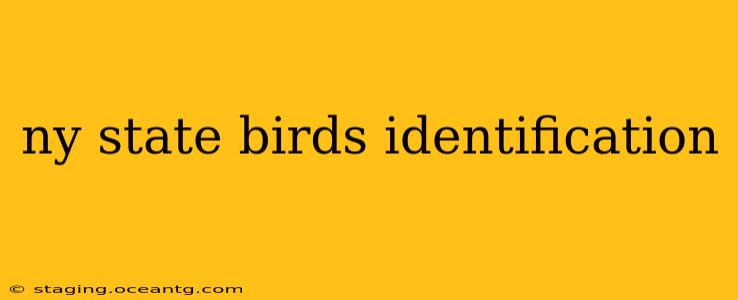New York's state bird, the Eastern Bluebird (Sialia sialis), is a captivating sight with its vibrant plumage and gentle nature. Identifying this beautiful bird requires attention to detail, and this guide will help you confidently spot one in the wild.
What are the key features of the Eastern Bluebird?
The Eastern Bluebird is relatively small, measuring about 6-7 inches in length. Its most striking feature is its brilliant blue back, wings, and tail. Males exhibit a richer, more intense blue than females. The breast and belly are a warm reddish-orange, while the throat is a lighter, rusty-orange. Females have a duller blue back and a less intense reddish-orange on their underparts. Juveniles are more brownish-gray overall.
How can I distinguish the Eastern Bluebird from other similar birds?
Several birds share similar colors or shapes with the Eastern Bluebird, causing confusion for beginners. Here's how to tell the difference:
Distinguishing from the Mountain Bluebird:
The Mountain Bluebird has a much brighter, almost electric blue overall, lacking the reddish-orange breast of the Eastern Bluebird. Their underparts are typically white. The Mountain Bluebird is also a less common sight in New York, primarily appearing in the western parts of the state.
Distinguishing from the Western Bluebird:
The Western Bluebird has a rufous (rust-colored) patch on its breast that is more extensive than the Eastern Bluebird's. It also has a slightly brighter blue back. Similar to the Mountain Bluebird, the Western Bluebird is less frequently seen in New York State.
Distinguishing from Robins:
While Robins share a reddish-orange breast, they are noticeably larger than Bluebirds and lack the vibrant blue upperparts. Their breast coloration is also more uniform and less vibrant.
Where can I find Eastern Bluebirds in New York?
Eastern Bluebirds prefer open areas with scattered trees and shrubs. They are often found in:
- Fields and meadows: These provide foraging grounds for insects.
- Orchards: They are often seen perched on branches or fence posts.
- Parks and suburban areas: Especially those with nesting boxes.
- Wooded edges: Areas where forests meet open land.
They are less commonly seen in dense forests.
What is the best time of year to see Eastern Bluebirds in New York?
Eastern Bluebirds are present in New York year-round, but their numbers fluctuate with the seasons. They are more easily observed during their breeding season (spring and summer) when they are actively defending their territories and nesting. During the winter, they may congregate in larger flocks, making them easier to spot in certain areas.
What do Eastern Bluebirds eat?
Eastern Bluebirds are insectivores, primarily feeding on insects like beetles, grasshoppers, and caterpillars. They will also consume berries and other fruits, especially during the winter months when insects are scarce.
What threats do Eastern Bluebirds face in New York?
Like many birds, Eastern Bluebirds face various challenges:
- Habitat loss: The destruction of their preferred habitats due to development and agriculture.
- Competition with invasive species: House Sparrows and European Starlings compete for nesting sites and food resources.
- Pesticide use: Exposure to pesticides can negatively affect their health and reproductive success.
- Predation: Nests can be preyed upon by snakes, squirrels, and other animals.
By understanding the key identification features, habitat preferences, and potential challenges faced by Eastern Bluebirds, you will be well-equipped to appreciate and protect these beautiful birds in New York State. Remember to always observe them respectfully from a distance.
